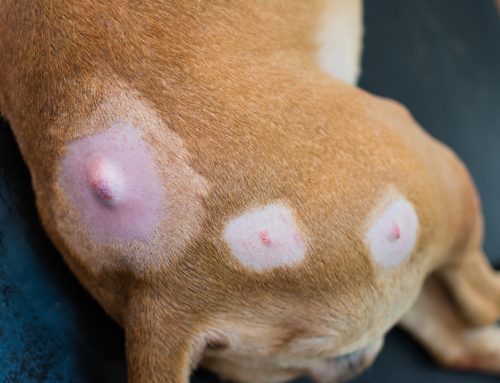Welcoming a new puppy or kitten into your home is exciting, but those first few months come with a steep learning curve—especially when it comes to health. Young pets are adorable, energetic, and endlessly curious—but they’re also more fragile than they seem. Emergencies can happen fast, and knowing what’s normal (and what’s not) could be the difference between a close call and a tragedy.
At Guam Pet Hospital, we want to help you recognize the red flags that signal a true emergency—so you can act quickly and confidently when your little one needs help the most.
Why Puppies & Kittens Are More Vulnerable
Puppies and kittens are still developing, and their small size and immature immune systems make them more prone to serious complications from common issues.
What Makes Young Pets High-Risk?
- Fragile immune systems: They’re more susceptible to viruses, parasites, and infections.
- Curiosity + clumsiness: Young pets are more likely to ingest harmful objects or get into unsafe areas.
- Tiny bodies, big consequences: Dehydration, low blood sugar, or even mild trauma can escalate quickly.
- Rapid changes: They can go from playful to lethargic in a matter of hours—sometimes minutes.
For tips on early-stage care and behavioral guidance, check out:
- Nurturing Your Feline Friend: A Guide to Health Care in Your Kitten’s First Year
- Preventive Behavioral Care: Setting Your Pup Up for Success – AVSAB
Emergencies You Can’t Afford to Miss
Even minor symptoms in an adult pet can signal a crisis in a puppy or kitten. Here’s what to watch for—and how to respond.
Choking or Trouble Breathing
What to look for:
- Gagging, coughing, retching
- Open-mouth breathing or wheezing
- Blue-tinged gums or tongue (a sign of oxygen deprivation)
- Pawing at the mouth or sudden collapse
What to do:
- Gently check for visible objects but don’t reach blindly.
- Perform the Heimlich if trained: Dog Choking: Heimlich Instructions
- Head to the vet immediately.
Consider taking a Cat and Dog First Aid Class – American Red Cross to prepare for emergencies.
Poisoning or Toxic Ingestion
Young pets explore the world with their mouths—which makes poisoning one of the most common emergencies we see.
Common toxins:
- Foods: chocolate, grapes, xylitol, onions
- Household items: medications, antifreeze, cleaning products
- Plants: lilies (toxic to cats), sago palm, aloe
What to do:
- Call ASPCA Poison Control right away.
- Don’t induce vomiting unless told to do so by a vet or poison control expert.
Vomiting and Diarrhea
One bout of vomiting or diarrhea may not be a crisis—but in a young pet, it can quickly lead to life-threatening dehydration.
When to worry:
- Vomiting or diarrhea more than once in 12–24 hours
- Blood in stool or vomit
- Lethargy, sunken eyes, dry gums, refusal to eat or drink
These symptoms could point to dangerous conditions like parvovirus, intestinal parasites, or poisoning. Don’t wait—seek care immediately.
Hypoglycemia (Low Blood Sugar)
This is a critical emergency in toy-breed puppies, underweight kittens, or any pet who hasn’t been eating.
Warning signs:
- Trembling or weakness
- Confusion or disorientation
- Seizures, collapse, or coma
Emergency care tip: Rub honey or Karo syrup on your pet’s gums if they’re conscious and responsive, and call your vet right away.
How to Prevent Common Emergencies
Prevention goes a long way—especially when it comes to curious, fearless puppies and kittens.
Pet-Proof Your Home
- Keep electrical cords, cleaning supplies, and medications out of reach.
- Store small toys, trash, and food behind closed doors.
- Use baby gates to keep them out of unsafe areas.
Essential Tips for Pet-Proofing Your Home
Stay on Top of Health Care
- Vaccinations and deworming build immunity against dangerous infections.
- Regular exams allow your vet to spot issues early.
- Socialization and training reduce risk of injuries and fear-based behaviors.
Kitten Success Guide – Fear Free Happy Homes
Be Financially Ready for the Unexpected
Emergency vet visits can be stressful—and expensive. But there are ways to prepare:
- Pet insurance helps offset costs.
- Emergency savings fund gives peace of mind during a crisis.
Learn more:
- Pet Insurance Explained – Pawlicy Advisor
- Paying for Pet Care – Pawlicy Advisor
- Cost of Owning a Dog – MarketWatch Guide
- Cat Ownership Cost – ASPCA Pet Insurance
When to Call the Vet (Right Away)
Seek immediate care if your puppy or kitten:
- Is struggling to breathe or collapses
- Has repeated vomiting or diarrhea, especially with blood
- Shows signs of pain, shaking, or extreme lethargy
- Has pale gums, seizures, or confusion
- Swallowed a foreign object or known toxin
If you’re worried, don’t wait. It’s better to be safe than sorry.
Contact Guam Pet Hospital
Your puppy or kitten depends on you for everything—including protection in an emergency. By knowing what signs to watch for and how to respond, you can safeguard their health during these vulnerable early months.
Have questions or concerns? We’re here to help guide you through.
Guam Pet Hospital — Compassionate care, when you need it most.









Leave A Comment